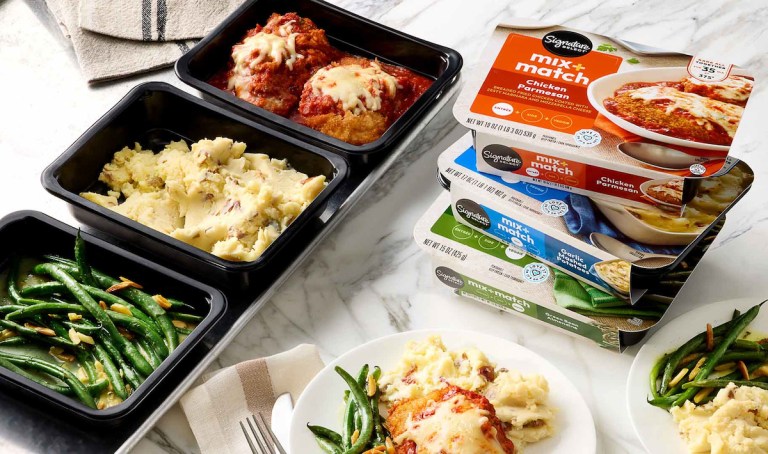
Albertsons Companies is setting its sights on convenient meal occasions with the launch of ready-to-cook meals, a move that comes as grocers increasingly look to gain share of consumers’ food spending from restaurants.
The grocery giant, which has more than 2,200 stores across the country, announced Thursday (Jan. 11) the launch of its new private-label frozen food offerings, dubbed Signature Select Mix + Match, including a range of dishes that all cook in the oven at the same temperature for roughly the same amount of time.
“Our new Signature Select Mix + Match line of frozen entrees, sides and veggies made from quality ingredients is the ultimate solution for busy families who need a simple, delicious dinner without time-consuming prep and clean up,” Executive Vice President and Chief Merchandising Officer Jennifer Saenz said in a statement.
The move comes as more grocers offer consumers quick, easy meal options to capture back food occasions from restaurant takeout, a channel that has grown following the digital ordering boom seen in the pandemic.
The PYMNTS Intelligence study “Connected Dining: Ready-to-Eat Meals Are Eating Restaurants’ Lunch,” which drew from a survey of more than 2,300 U.S. consumers in April, revealed that 57% of consumers buy ready-to-eat each month, and half of those do so at least once a week. Additionally, the study revealed, 65% of ready-to-eat meal purchasers bought their most recent such meal at a grocery store.
As such, grocers are increasing their meal options. Kroger, for instance, is not only focusing on ready-to-eat options in stores but also targeting the direct-to-consumer opportunity with eCommerce subscriptions. Late last year, the grocer augmented its existing Home Chef meal kit offering with a new service, Tempo, which sells subscriptions for single-serve, microwaveable meals with a focus on nutrition.
“There are certainly going to be some people where this is replacing grocery,” Scott Payne, chief product officer at Home Chef and Tempo, told PYMNTS in an interview posted in October. “There are some people who haven’t traditionally cooked in the past, so that might be replacing takeout, and there might even be traditional meal kits subscribers who are looking for something more convenient.”
Demand for these options, which tend to be more affordable than restaurant dining, rises as consumers’ budgets come under pressure, with ongoing food inflation eating away at their spending power.
In addition to adding heat-and-eat meals, some grocers have also been adding more in-store restaurants, looking to become a unified destination for a range of different meal occasions. Kroger, for its part, has become the top sushi seller in the country.
“The grocery store is trying to be the one-stop shop,” Geoff Alexander, president and CEO of restaurant brand Wow Bao, which sells its products in Walmart and other supermarkets, told PYMNTS in a conversation last year. “Whether it’s for ready-to-eat meals, food for another night, or the typical grocery shop, they’re trying to entice the consumer to use the grocery store in many different ways.”